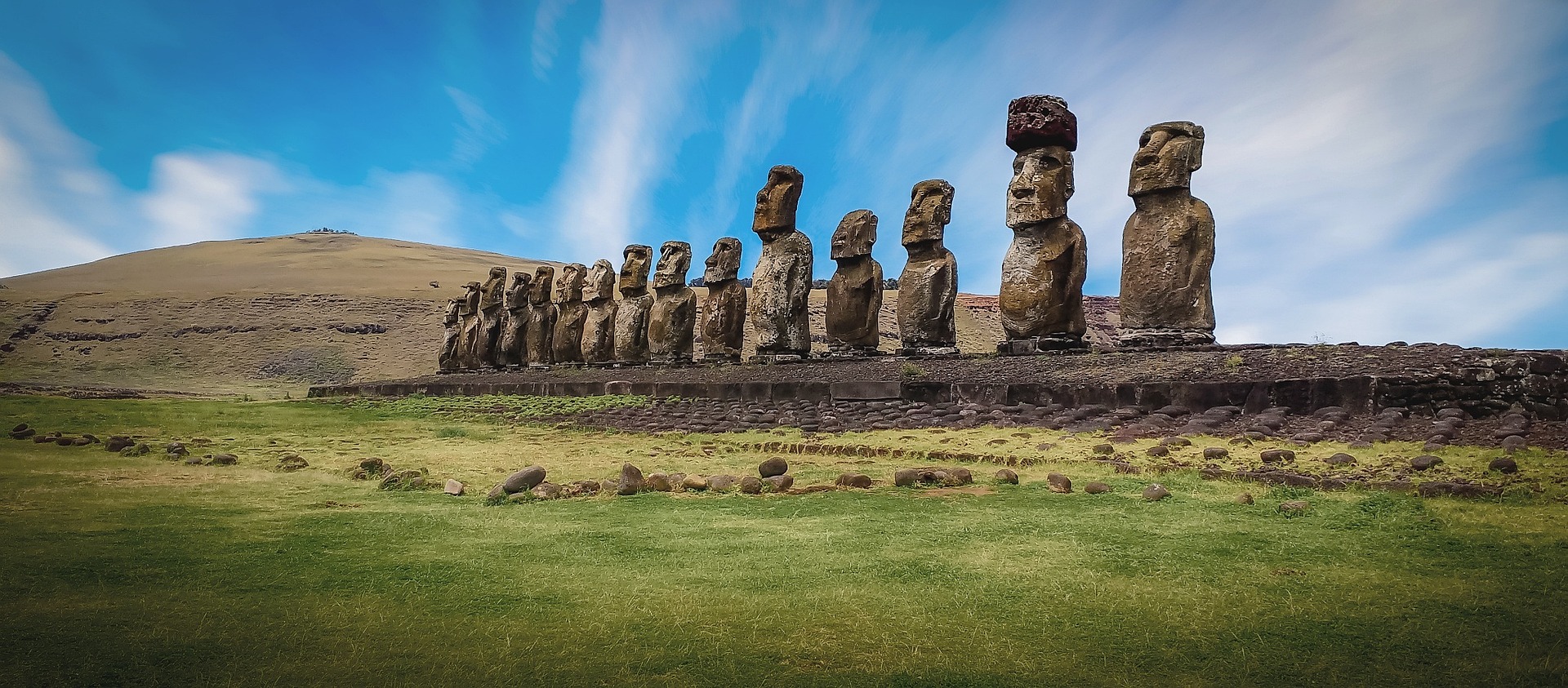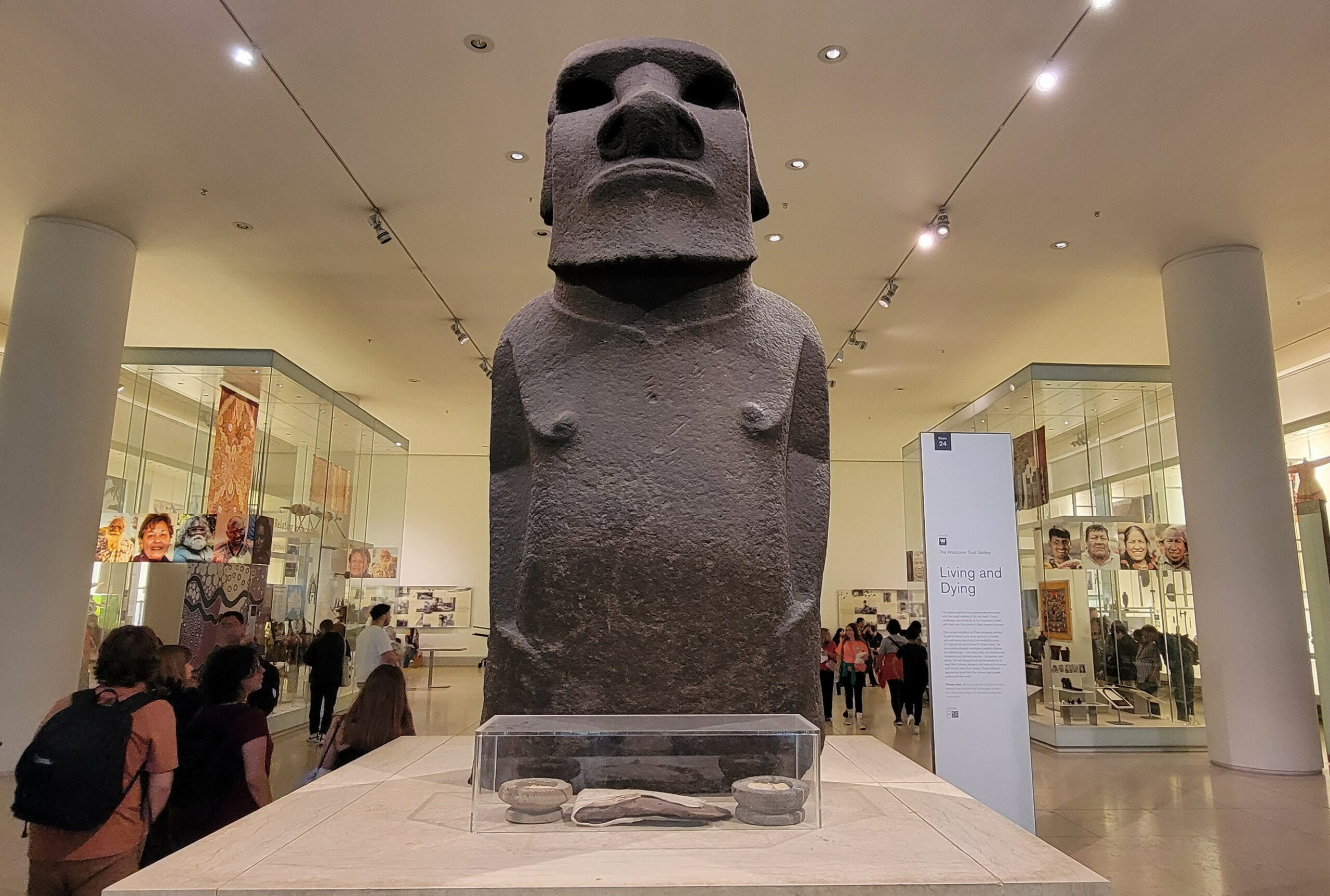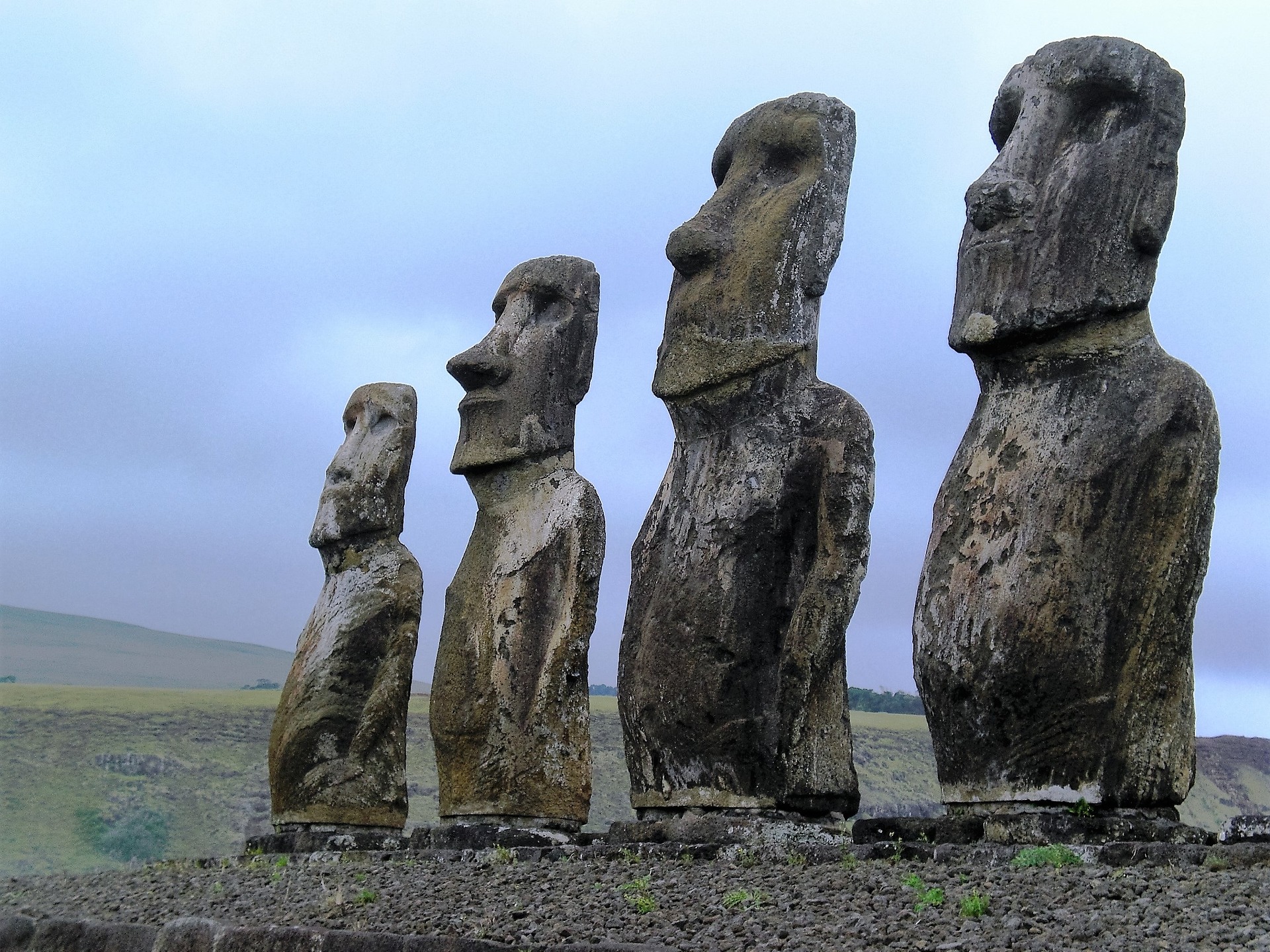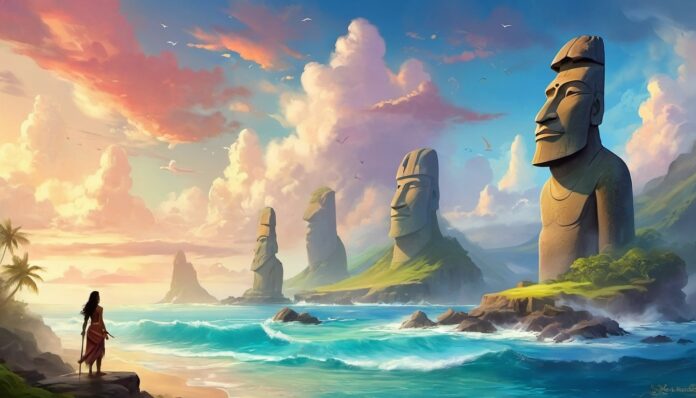An isolated patch of land washed by the Pacific Ocean, Easter Island – belonging to Chile (also known as Rapa Nui) is one of the most unusual places on the planet. Located 3514 km from the continent’s coast and over 2000 km from the nearest populated area on Pitcairn Island.
Where did the people come from here? Why did they create giant statues? The world’s top scientists have been struggling for decades to find answers to these and other questions. Sometimes it seems that mystical forces, contained in the stone Moai, still guard the secrets of the silent giants who vanished into eternity.
History of the island and interesting facts
On April 6, 1722, sailors from the expedition of the famous navigator Jacob Roggeveen saw hilly outlines ahead on the Dutch ship: it was an island not marked on the map. Jacob named it after the religious holiday that fell on the day of discovering new land.
In addition to the official name, the territory has several other names:
- Rapa Nui – “Big Rapa”;
- Te-Pito-O-Te-Henua – “The Navel of the World”, “The Navel of the Earth”;
- Mata-Ki-Te-Rangi – “Eyes looking at the sky”.
It is still unclear where the first people came from and when exactly they appeared here. Radiocarbon analysis of charcoal shows that colonization occurred in 1200 AD, but according to other data, settlement occurred about half a century earlier.
Easter Island Legends
Legends of the Rapanui tell of the island’s first king, Hotu Matu’a, who ruled the Polynesian country of Hiva. When his lands were threatened by flooding, one of his subjects dreamed of a magnificent island. The leader ordered seven brave men to find a new home, and they did. Soon, Hotu Matu’a arrived here with his family and faithful warriors and founded a settlement.
The famous Norwegian Thor Heyerdahl defended the version that the first to reach Rapa Nui were Native Americans. At first, these were Peruvians, later – those from the northwest coast of the North American continent. The researcher proved: the journey across the Pacific Ocean on a light raft is possible, he personally built such a raft and set out on a journey with five desperate friends. After 101 days, the team reached French Polynesia.
The theory that considers the similarity of Rapa Nui’s culture to Polynesian seems plausible. The likely homeland of the aborigines is called the Marquesas Islands, the Cook Islands, or Tahiti. DNA samples from ancient burials confirm: Mata-Ki-Te-Rangi was inhabited by people from Eastern Polynesia.
According to legends, before the arrival of Europeans on Rapa Nui, there were two different peoples. Hanae-epe with elongated earlobes had their own writing and possessed many useful skills. They sailed to an island already inhabited by the “short-eared” people.
Wars began, and in the decisive battle, the “long-eared” – the creators of Moai – almost all died. Epidemics, attacks by slave traders, and famine devastated the once flourishing land. Today, about 1500 descendants of indigenous settlers live here, but they have almost lost their connection to the past.
Eternal guardians of the island – stone Moai
Moai, translated as “watchful eye”. Most of the figures are carved from hardened volcanic ash, mined in a quarry on the slopes of Rano Raraku – an extinct volcano. The time of creation is between 1250 and 1500 AD.

Distinctive features of the Rapa Nui Moai:
- very large heads;
- broad noses and impressive chins;
- deep eye slits.
Individual statues have a resemblance to headgear or mounds of hair and are adorned with petroglyph tattoos. Hundreds of statues are buried up to their necks, while the rest stand on platforms. The underground part of the statues is much more massive than what is visible.
To this day, 887 pagan idols have survived, but there may be many more objects underground. The largest sculpture, 21 meters high and weighing approximately 270 tons, was abandoned unfinished in the quarry, as were some others. The average size of a Moai is 4 meters, weighing up to 5 tons.
The figures created earlier than the rest are located around the perimeter of Rapa Nui on ceremonial platforms and face inward towards the island. Seven idols gaze out to sea. It is believed that these are the seven brave men from the legend of Hotu Matu’a, awaiting their leader. About 45% of the statues remain on the slopes of the volcano.
Who and why created these mysterious statues?
According to most scientists, the islanders built the giant statues for worship. The natives believed that the grim sculptures were an embodiment of the power of their ancestors. The erection of each new Moai made the clan stronger, gaining the favor of higher powers. During wars, the first thing they did was to topple the sculptures of their enemies.
Archaeologists Terry Hunt and Carl Lipo concluded that the monolithic colossi not only had a cult value, they were also needed to deter sailors from the island, which is why they were placed on the coast.
Some statues are placed with unknown precision. For example, there is a group of seven statues facing where the sun sets on the day of the equinox.
Rapa Nui is a fragment of the sunken continent of Pacifica, claim some researchers. In the past, it was inhabited by a highly developed civilization. It was they who displaced the stone gods, using supernatural abilities.
The statues were made by aliens, claim ufologists, and only this can explain the appearance of such impressive statues on an island full of savages. Many colossi remained unfinished because the guests went on to conquer the expanses of the Universe, and people could not cope with the daunting task themselves.
How were the statues moved? Stone hats ruin all theories.
This question remains open. Thor Heyerdahl, together with the descendants of the “long-eared,” conducted a successful experiment: a 12-ton sculpture was carved in the quarry, then transported horizontally by dragging it to the installation site and lifted upright with a special device.
The second possible method is the movement of a vertically oriented statue, inclined and rotated with sturdy ropes. Both options have been tested in practice, they work, but there is one caveat. Heavy hats weighing up to 11 tons are placed on the heads of some idols, and this is an extremely complex process requiring special knowledge and adaptations.
It remains only to guess where the ancient Rapanui found talented engineers. Supporters of the idea of a lost continent refer to mythology. The natives claim that the Moai could move. Perhaps that was the case: engineers were not needed – the hewn monoliths were raised thanks to telekinesis.
Ahu Platforms
The pedestals on which the islanders erected Moai are no less strange than the statues themselves. Almost all of them are laid along the coast, representing platforms ranging in length from 10 to 160 meters, width about 50 meters, and height 3-6 meters. If you add a few missing lines, it turns out that the island is surrounded by fortifications.
Hundreds of blocks are carefully processed and fitted together. There are platforms of lower quality. The oldest ahu dates back to the 7th century AD. The first platforms were created by skilled builders, and all subsequent ones look like a poor imitation. Perhaps when settlers arrived on the island, the mysterious platforms were already standing.
Massive figures on a slag foundation are an unstable construction. During restoration, it was necessary to even pour concrete into the bases of the idols, otherwise they would constantly fall. Ahu platforms are clearly not designed as pedestals for giants, but are created with some other, as yet unknown purpose. Burial chambers have been discovered inside them. Here, a connection with the Egyptian pyramids is clearly traced, as well as with the pyramids of Yucatan.
According to the beliefs of the Rapa Nui people, these platforms provide a connection between our world and the afterlife. All main ahu are oriented towards the main astronomical points of the year. The construction of the oldest ones resembles certain Inca structures, which raises even more questions.
Undeciphered Rongorongo scripts
Shedding light on the mysteries of Rapa Nui could have been possible through written sources, but no one has been able to decipher them yet. Artifacts were barbarically destroyed by Christian missionaries, and people associated with surviving relics seemed to be pursued by ill fate.
In 1914-1915, Katherine Scoresby Routledge, who led an English expedition, communicated with an elderly man who knew a little about the indigenous script. He refused to teach her, stating that spirits forbid revealing the secrets of the ancestors to strangers. Soon, Katherine went insane and died, and all materials from the expedition disappeared.
Jorge Silva Olivares from Chile photographed pages with valuable recordings in the local language, but the film reel disappeared. Thor Heyerdahl was also unlucky. A local man named Esteban had a notebook in which the Rongorongo letters were transcribed into Latin, but the islander refused to give it away, and soon disappeared without a trace in the middle of the ocean.
Museums hold 25 tablets and objects with markings resembling hieroglyphs of Ancient Egypt, the Indus Valley Civilization, and even Chinese script. Unfortunately, experts with worldwide reputation shrug their shoulders: the intricate texts remain undeciphered for now.
